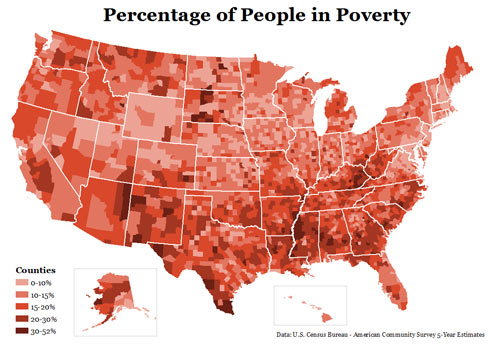We have seen destruction of public housing projects all over the United States, most notably in Chicago. We have seen thousands of individuals cast out of their homes with little to no living options. I have a hard time believing that the government really even cares for the individuals living in these poorer areas, because we have seen them be extremely mistreated spanning across multiple decades. Why does the government decide to knock down buildings, with no intention to help people reallocate? Gottdiener, et. al give the statistics of the expenditures in the revitalization efforts, showing that more money was spent every few years, resulting in a 500% increase spanning from 1960-1970.
Part of the reason as to why the government kept spending more, was because of the de-urbanization that occurred in the 1950s. Highways were built which gave access to other areas previously untouched by urbanization. Housing development companies capitalized upon the land to create suburbs, and introduced the concept of the "American Dream". While this was happening, cities were left to die. Businesses located in downtown areas suffered immensely as they watched all their customers move away. The government spent tons of money to try and build up the cities to entice people to stay.
 The higher class families and individuals were the ones who left the cities, while individuals with little to no upward mobility were forced to remain. Many of the individuals who could not leave the city were forced out of their homes because the urban renewal project was initiated by private real estate companies which cleared the slums and used the land to generate profits. The real estate companies built up the downtown areas for the middle and high classes, and aimed to build shopping malls, plazas, and civic centers. Observers of the slum removal noted that this program seemed to be more effective at removing African American families and individuals from desirable real estate markets, rather than replacing slums with affordable housing. Over 75% of all persons removed by the renewal projects were black, thus dawning the term of "Negro Removal" (Robertson and Judd 1989:3).
The higher class families and individuals were the ones who left the cities, while individuals with little to no upward mobility were forced to remain. Many of the individuals who could not leave the city were forced out of their homes because the urban renewal project was initiated by private real estate companies which cleared the slums and used the land to generate profits. The real estate companies built up the downtown areas for the middle and high classes, and aimed to build shopping malls, plazas, and civic centers. Observers of the slum removal noted that this program seemed to be more effective at removing African American families and individuals from desirable real estate markets, rather than replacing slums with affordable housing. Over 75% of all persons removed by the renewal projects were black, thus dawning the term of "Negro Removal" (Robertson and Judd 1989:3). My question is how can the government effortlessly spend billions of dollars to tailor to the higher class people, but cannot allocate a fraction of a percentage of that to take care of the lower, poorer, and most likely African American populations. It is because there is an extreme amount of racism built into the many institutions the we have in place in America today.
This first link details why the Housing Act of 1949 is considered highly controversial, and it also covers data from a study conducted by Collins and Shester.
http://freakonomics.com/2011/09/30/the-controversial-legacy-of-slum-clearance/
This second link is David Smith's blog, and entails various steps that took place during the slum-clearance era to rid housing units of unsustainable renters.
http://affordablehousinginstitute.org/blogs/us/2008/10/history-of-us-public-housing-part-3-the-slum-clearance-era.html

I definitely believe that racism is so powerful today because of all of systemic disadvantages that people of color face. I'm glad that is something that you pointed out in your blog. It is quite frankly the only answer to the question to posed. The government only invest into certain social and economic statuses. Overall, fairly good job on summarizing the chapter.
ReplyDelete